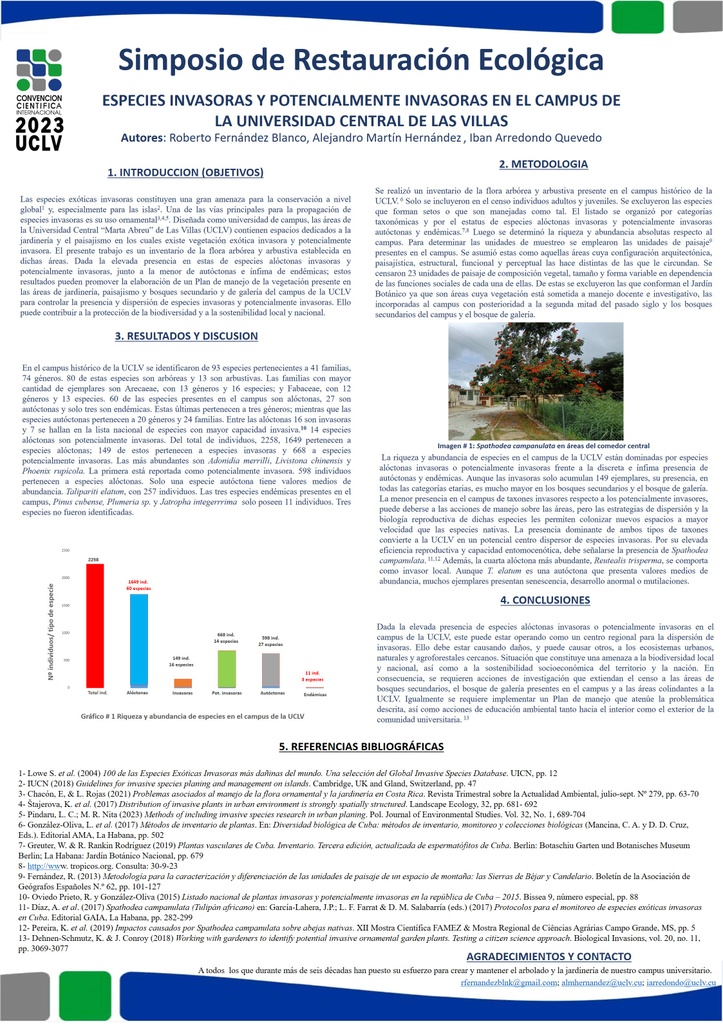Executive Secretary

9th International Scientific Conference on Agricultural Development and Sustainability
5th Symposium of Ecological Restoration

Abstract
Invasive species are one of the main causes of biodiversity loss globally. In Cuba, 337 taxa of invasive plants have been reported and another 242 with the potential to be so. Many of these species have been introduced for ornamental purposes. Since its founding, a significant number of invasive and potentially invasive species have established themselves on the historic UCLV campus. To investigate the richness and abundance of invasive species on the historic UCLV campus, individuals of arboreal and shrubby size were monitored in all the landscape-architectural sectors that make it up. Only those belonging to the Botanical Garden were excluded. Exotic species predominate in all sectors. Among these, Terminalia catappa, Casuarina equisetifolia, Spathodea campanulata, Tithonia diversifolia and Dypsis lutecens stand out as invasive. Among the potentially invasive are Hura crepitans and Adonidia merrilli. The presence of native species such as Terminalia buceras and Coccoloba uvifera or endemic species such as Pinus cubensis is almost nonexistent. The results of this study could be included in a management plan to control the presence of invasive species in the garden areas of the historic UCLV campus and also to make it a reservoir for the ex situ conservation of the cuban flora.
Resumen
Las especies invasoras constituyen una de las causas principales de pérdida de la biodiversidad a nivel global. En Cuba se han reportado 337 taxones de plantas invasoras y otros 242 con potencialidad para serlo. Muchas de estas especies han sido introducidas con fines ornamentales. Desde su fundación, en el campus histórico de la UCLV se han establecido un número importante de especies invasoras y potencialmente invasoras. Para indagar sobre la riqueza y abundancia de especies invasoras en el campus histórico de la UCLV, se monitorearon los individuos de porte arbóreo y arbustivo en todos los sectores paisajístico-arquitectónicos que lo conforman. Solo se excluyeron los pertenecientes al Jardín Botánico. En todos los sectores predominan las especies exóticas. Entre estas destacan como invasoras Terminalia catappa, Casuarina equisetifolia, Spathodea campanulata, Tithonia diversifolia y Dypsis lutecens. Entre las potencialmente invasoras se hallan Hura crepitans y Adonidia merrilli. La presencia de especies autóctonas como Terminalia buceras y Coccoloba uvifera o endémicas como Pinus cubensis es casi nula. Los resultados del presente estudio podrían incluirse en un plan de manejo para controlar la presencia de especies invasoras de las áreas de jardinería del campus histórico de la UCLV y también para hacer del mismo un reservorio para la conservación ex situ de la flora de Cuba.
About The Speaker

Roberto Fernández Blanco

Discussion

